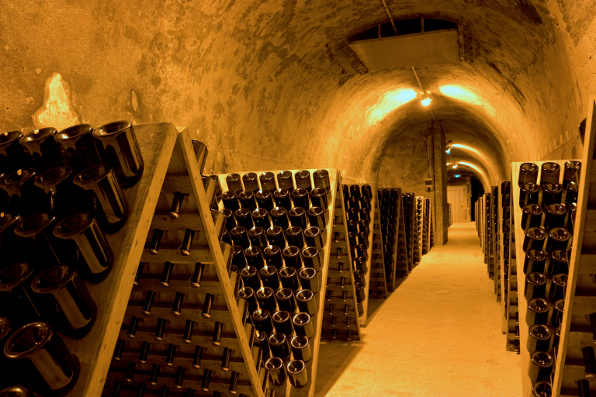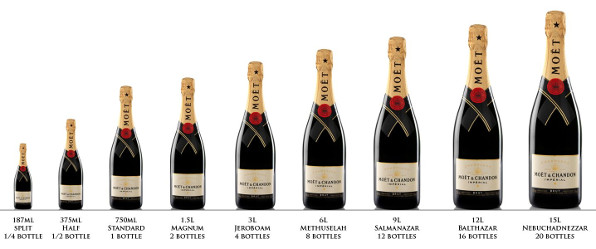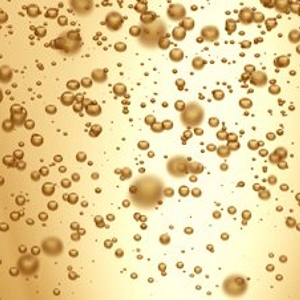It’s New Year’s Eve and we all have our own expectations as to where we’ll be and what we’ll be doing when the Ball drops in Times Square. But there are some things we have in common, as citizens of the developed Western World. And one of those is Champagne…
 A small annex in the Taittinger Cellars in Riems: The bottles are resting
A small annex in the Taittinger Cellars in Riems: The bottles are resting
in special racks where they will undergo multiple turnings to make
the residual yeast fall to the neck and form a plug that
will be removed just before final corking…
I’ve posted about the classic New Year’s tipple before in this space and probably will again. But I’ve never before gone into the history of Champagne and how it came to be the celebratory beverage of choice for so many.
In the beginning…
It all started when Roman invaders first planted grapes in northern Gaul, which would later become France. Red wine was coveted, but it was hard to make in the northern reaches where the growing season was short and the grapes never fully ripened. So, the result was thin, tart vintages of pale colour. And cold winters caused the yeast to go dormant. In the spring, after the wine was bottled, it would become active again generating carbon dioxide gas which sometimes caused bottles to burst. Bubbles in the wine were considered a menace rather than a blessing in the fifteenth century. The production of sparking Champagne was a hit-and-miss proposition and a boutique industry at first, and the bubbly confection was still quite rare during the seventeenth century. Only the rich and royal could afford it. Nevertheless, it was already becoming legendary.
The ‘modern’ era…
Then, around the turn of the eighteenth century, a Benedictine monk named Dom Pérignon (1638–1715) revolutionized the way the world celebrates, inventing the Méthode Champenoise, by which the Bubbly we know today is made and bottled. It was about that time, too, that the modern Champagne bottle was developed, with thicker glass sides and a pressure-resistant dimple, or ‘punt’, in the base. Likewise, the famous mushroom-shaped cork, wired down to prevent it popping under pressure.
 The Champagne Bottle family. Only this wine style
The Champagne Bottle family. Only this wine style
comes in so many different sizes…
The Champagne technique was famously perfected and scaled up for mass production by the house of Clicquôt, which was established in 1772 by a window (‘veuve’) with a fascination for the wine. Veuve Clicquôt is still one of the leading Champagne houses today, along with the likes of Bollinger, Môet & Chandon, Pommery, Taittinger and Krug.
The AOC law protects ‘real’ Champagne…
AOC is short for ‘Apellation d’origine contrôlée’, the French government law that defines what real Champagne is and where it can be produced. Similar laws exist defining the classic French wines of Bordeaux, Burgundy and other regions. Under international agreements, no wines grown elsewhere can be marketed under those names. Thus, Champagne-style beverages from other countries are usually referred to as ‘Sparking Wines’.
Long associated with celebrations…
Champagne and its international cousins have long been associated with celebrations of all kinds. The tradition seems to have been rooted in its early novelty, rarity and costliness, when a bottle of the coveted quaff was uncorked only on special occasions. Even though the Champagne houses of northern France press enough grapes each year to make 200 million bottles of the stuff, the price remains relatively steep due to the unique, labour-intensive process required to make it. It’s not like Soda Pop, which is simply injected with carbon dioxide. Live yeast still make the bubbles right inside each sealed Champagne bottle, under carefully controlled conditions.
Join the party!
Whatever you toast with tonight, enjoy it. And raise a glass to Dom Pérignon and the widow Clicquôt in thanks…
~ Maggie J.

